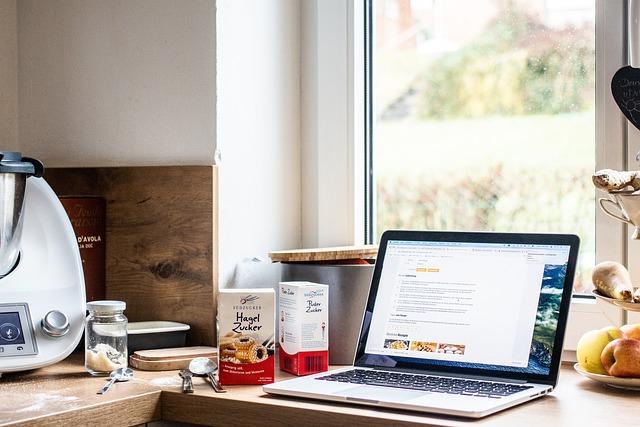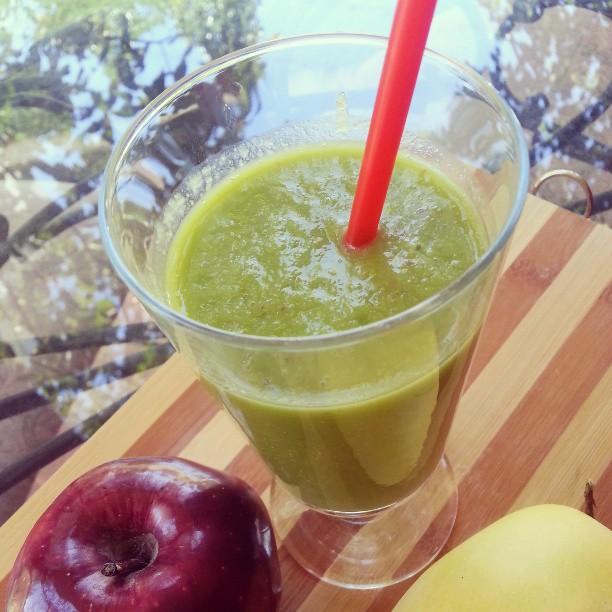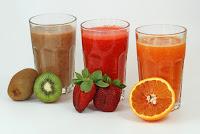In the vibrant world of children’s nutrition, where kaleidoscopic cereal boxes and animated fruit snacks compete for attention, a new contender has emerged, blending its way into the hearts and homes of families: the smoothie. With their colorful allure and promise of packed nutrients, smoothies are being hailed as a convenient solution for parents seeking to balance taste and health. But as with any food trend that gains momentum, questions arise. Should kids be drinking smoothies daily? This article delves into the depths of this dietary dilemma, exploring the potential benefits and drawbacks of incorporating smoothies into a child’s everyday diet. As we embark on this flavorful journey, we’ll sift through expert opinions, nutritional data, and parental anecdotes to uncover whether this blended beverage is a friend or foe in the quest for optimal childhood nutrition.
Exploring Nutritional Benefits of Daily Smoothies for Kids
Incorporating smoothies into a child’s daily diet can be a delightful way to ensure they receive essential nutrients. These colorful blends offer a powerhouse of vitamins and minerals when crafted thoughtfully. A well-balanced smoothie can include a variety of fruits and vegetables, providing kids with necessary antioxidants and fiber. The inclusion of dairy or plant-based milk can add a dose of calcium and vitamin D, essential for growing bones. Additionally, a spoonful of nut butter or seeds can offer healthy fats and protein, supporting energy levels and growth.
- Fruits and Vegetables: Packed with vitamins, minerals, and fiber.
- Dairy or Plant-Based Milk: Source of calcium and vitamin D.
- Nut Butter or Seeds: Provides healthy fats and protein.
However, it’s crucial to be mindful of the sugar content in smoothies. Opting for natural sweeteners like ripe bananas or a splash of honey can keep things balanced. Customizing smoothies to suit a child’s taste preferences not only makes them more appealing but also encourages healthy eating habits from an early age. Remember, moderation is key, and smoothies should complement a well-rounded diet rather than replace whole foods.

Balancing Sugar and Nutrients in Childrens Smoothie Recipes
When crafting smoothies for children, it’s essential to strike a harmonious balance between sweetness and nutrition. A common pitfall is overloading these drinks with sugary fruits or sweeteners, which can overshadow their health benefits. To ensure a nourishing concoction, consider including a variety of ingredients that provide a range of nutrients. Here are some tips to maintain this balance:
- Incorporate Vegetables: Spinach, kale, or even avocado can add a creamy texture and pack a nutritional punch without overwhelming the flavor.
- Opt for Natural Sweeteners: Instead of refined sugar, use naturally sweet fruits like bananas or mangoes, which also offer fiber and vitamins.
- Add Protein Sources: Greek yogurt, nut butter, or a scoop of protein powder can help keep kids full and support their growth.
- Experiment with Superfoods: Chia seeds, flaxseeds, or a touch of spirulina can elevate the nutritional profile without altering the taste dramatically.
While it’s tempting to make smoothies a daily treat, moderation is key. Varying the ingredients not only keeps the smoothies exciting but also ensures that children receive a broad spectrum of nutrients. By being mindful of the sugar content and focusing on whole, nutrient-dense ingredients, smoothies can be a delightful and healthy part of a child’s diet.

Expert Opinions on the Health Impacts of Smoothies for Young Ones
Leading nutritionists and pediatric health experts are weighing in on the daily consumption of smoothies by children. While smoothies can be a convenient way to pack in nutrients, experts emphasize that not all smoothies are created equal. According to Dr. Jane Mitchell, a pediatric nutritionist, balance and moderation are key. She suggests that smoothies should be made with whole fruits, a variety of vegetables, and should avoid added sugars to maximize health benefits.
- Nutrient Density: Experts recommend using leafy greens and a variety of fruits to ensure a broad spectrum of vitamins and minerals.
- Protein and Fiber: Adding ingredients like yogurt, chia seeds, or oats can boost protein and fiber, helping kids stay full longer.
- Avoiding Sugar Overload: Pediatricians caution against using fruit juices or sweetened yogurts, which can lead to excess sugar intake.
Furthermore, Dr. Alex Carter, a child health specialist, highlights that while smoothies can complement a child’s diet, they should not replace whole fruits and vegetables. Texture and chewing are important for oral development and digestion. Thus, it’s essential to strike a balance between liquid nutrition and solid foods to promote healthy eating habits in children.

Practical Tips for Incorporating Smoothies into a Childs Diet
Transforming smoothies into a regular part of your child’s diet can be a delightful adventure, ensuring they get a burst of nutrients in every sip. Here are some practical tips to make this transition seamless and enjoyable:
- Get Them Involved: Encourage your kids to participate in the smoothie-making process. Let them choose their favorite fruits or add-ins like spinach or yogurt. This not only makes them more likely to drink the smoothie but also teaches them about healthy choices.
- Balance the Ingredients: Aim for a mix of fruits, vegetables, protein, and healthy fats. A simple formula could be one part greens, one part fruit, and one part protein like Greek yogurt or nut butter.
- Experiment with Flavors: Use different combinations to keep things exciting. Add a dash of cinnamon, a spoonful of cocoa powder, or a sprinkle of chia seeds for an extra nutritional boost.
- Size Matters: Keep portion sizes appropriate for your child’s age and dietary needs. A small cup is often sufficient for younger children, ensuring they don’t fill up on smoothies alone.
Incorporating these strategies can turn smoothies into a fun and nutritious habit, ensuring your child gets the vitamins and minerals they need while enjoying a tasty treat.
Future Outlook
As the blender’s hum fades and the vibrant whirl of fruits and vegetables settles into a glass, the question lingers: should smoothies be a daily staple in our children’s diets? In exploring this topic, we’ve journeyed through the potential health benefits, considered the sugar content lurking beneath the surface, and weighed the convenience against nutritional balance. Ultimately, the decision rests in the hands of parents and guardians, armed with knowledge and guided by their child’s unique needs and preferences. Whether smoothies become a daily ritual or an occasional treat, the goal remains the same: nurturing a love for wholesome, nutritious foods that fuel our children’s growth and imagination. As with any dietary choice, moderation and mindfulness pave the way to a balanced lifestyle, where every sip counts in the colorful tapestry of childhood nutrition.




